Recent Articles
Popular Makes
Body Types
2021 Ford Mustang vs. 2021 Chevrolet Camaro
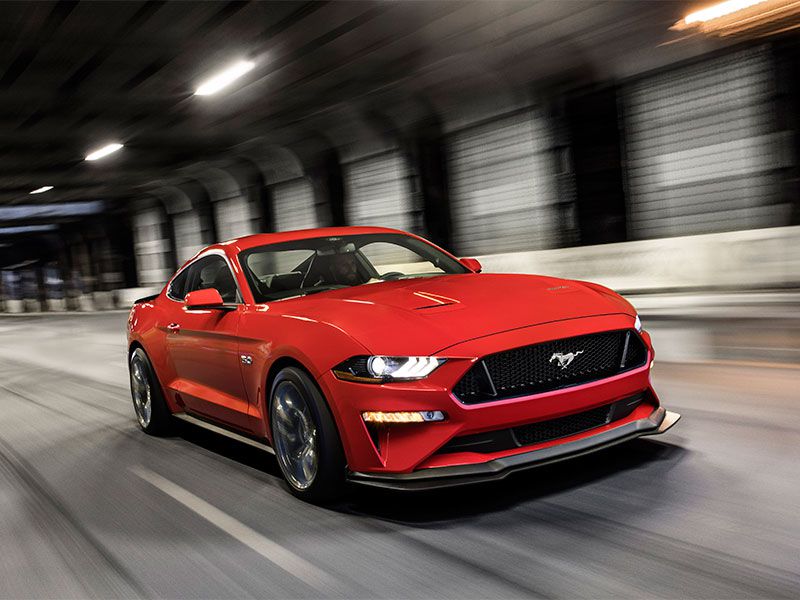
2020 Ford Mustang GT Performance Pack Level 2 ・ Photo by Ford
The comparison of the 2021 Ford Mustang and the 2021 Chevrolet Camaro is a classic battle that dates back almost seven decades. You already know the Ford Mustang invented the American personal sports car way back in the middle of the 1960s — yes, in another millennium — and when the Chevy Camaro came on the scene a couple of years later, the rivalry began. With two doors, bodies built for looks instead of utility, and the objective of helping their drivers and passengers enjoy the ride, the Mustang and the Camaro are anomalies in the current market that favors practical crossover SUVs. But there is still a market for “pony cars” like the Mustang and Camaro, although their sales volume is much lower than it was during the heady days of the sixties, when the Mustang and Camaro were just about the grooviest cars around. For those who want great looks paired with impressive rear-drive performance at an affordable price, the Ford Mustang and the Chevrolet Camaro are still great options today.
Exterior Design
Yes, decades have gone by since both of these sporty coupes and convertibles were first introduced to the public. But in an ode to their staying power, both the 2021 Camaro and the 2021 Mustang resemble their original selves when first introduced. Now, we are not suggesting that either car is a carbon copy of its original. And we also aren't saying the Mustang or the Camaro are retro cars that depend strictly on nostalgia for their appeal. What we are saying is that Mustangs and Camaros looked good then and still look good today. In fact, you can make the case that the long-hood, short-deck two-door styling they share is even more distinctive now than it was 60 years ago. Why? Because cars with that shape look very different from the 4-door sport utilities that are now ubiquitous on our roads and highways. Both the Mustang and the Camaro look not only sporty and muscular, but also exclusive today; there are so few of them on the road. In terms of overall length, the Chevy Camaro and the Ford Mustang are identical. The Camaro has a longer wheelbase by more than 3.5 inches which means its wheels are pushed out to the corners.
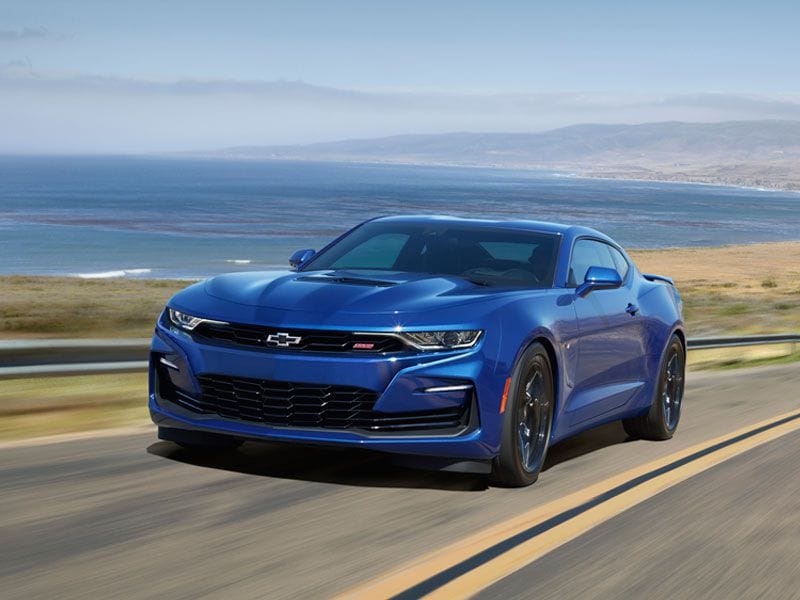
Photo by Chevrolet
Interior Style
Both the Mustang and the Camaro are available at various price points, depending on the trim level. You can buy versions of each that have sticker prices more than three times the least-expensive model’s base price. What this means is interior quality increases as you move up in the trims. The interiors you get in the base Camaro 1LS and the Mustang EcoBoost Fastback are significantly different, at least in execution, from the interior in a Camaro ZL1 or a Shelby GT500. What doesn’t change are the interior dimensions of the cars. Both Mustang and Camaro offer excellent front-seat comfort and convenience. Visibility, especially in the Camaro, is limited versus what many are currently used to. Neither car is particularly space-efficient because that isn't the point of them. Rear seats should be relegated to small children and very short-term use by adults with nice dispositions.
In terms of instrumentation, dash design, and legibility, the Chevrolet Camaro has a more modern design, while the Mustang’s instrument panel has more “retro” influences. You can decide which you prefer.
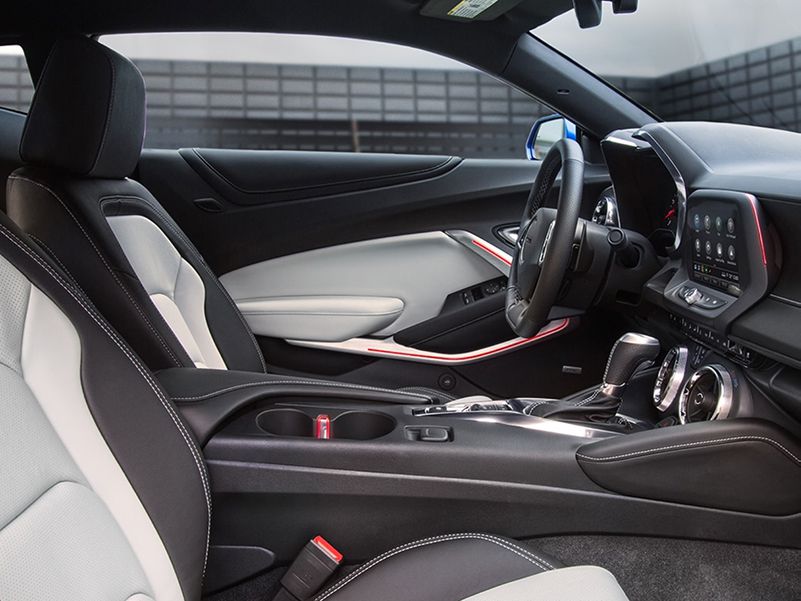
Photo by General Motors
Infotainment
Over the past decade, we have preferred the Chevrolet infotainment system and interface to the early iterations of Ford SYNC. But Ford has made great strides over the past year to catch up, and the SYNC 3 and SYNC 4 systems match up well with the Chevy system. In this day and age, the Camaro’s 7-inch and 8-inch infotainment screens are considered good but nothing special. At the same time, we like the way the infotainment system works, we appreciate the convenience of wireless Apple CarPlay and Android Auto, and we also like the available 8-inch digital gauge cluster and Bose audio systems. The Mustang offers a 12.3-inch color LCD digital instrument cluster on some of its upscale models. On the infotainment front, the base Mustang has a tiny 4.2 inch screen, but an 8-inch touchscreen featuring Apple CarPlay and Android Auto functionality is widely available. With a Bang & Olufsen sound system, you get very impressive audio through 12 speakers including a subwoofer in the trunk. And as a blast from the past, it has a CD player.
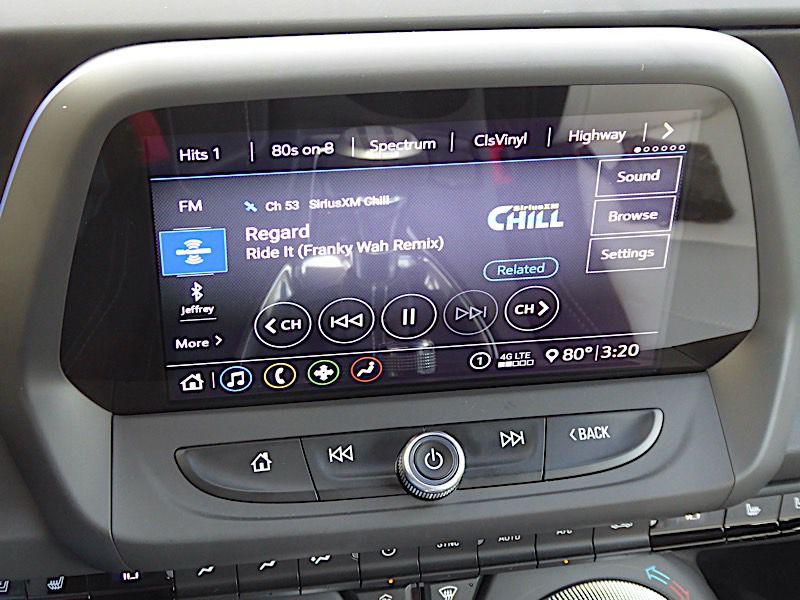
Photo by Ron Sessions
Powertrains
The Ford Mustang crossover offers five powertrain choices, and the Chevy Camaro counters with four choices. The base Mustang is powered by a 2.3-liter 310-horsepower turbocharged 4-cylinder engine, and the second engine choice is a retuned version of that engine offering 330 horsepower. Then there are two 5.0-liter V8 powertrains, the first delivering 460 horsepower and the second 480 horsepower. Finally, there is the 760-horsepower 5.2-liter supercharged V8 that resides in the Shelby GT500. Befitting the class, 6-speed manual transmissions are widely available. The predominant automatic transmission has 10 speeds, and the Shelby uses a 7-speed dual-clutch manumatic. The base engine is a 275-horsepower 2.0-liter turbocharged 4-cylinder. Next up is a 335-horsepower normally aspirated 3.6-liter V6. Then there’s a 455-horsepower 6.2-liter V8 and a 650-horsepower supercharged version of that engine. You get 6-speed manual transmission standard across the board. The base 4-cylinder can be equipped with an 8-speed automatic while 10-speed automatics are the norm across the rest of the lineup.
: Ford Mustang
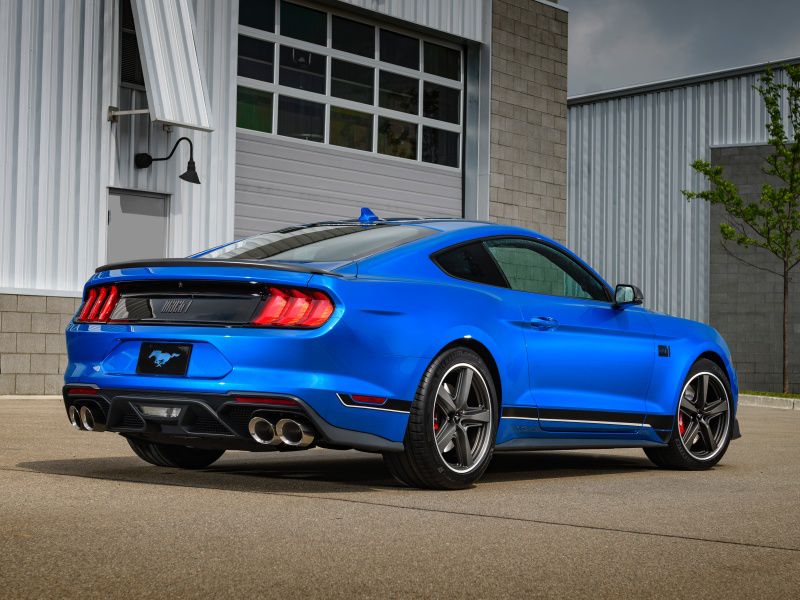
Photo by Ford
Driving Impressions
The variety of engine choices imply that each of these models will offer driving personalities that differ depending upon the powertrain. Both the 4-cylinder Camaro and the 4-cylinder Mustang actually provide quite a bit of driving enjoyment. They have ample power and low-end torque, and turbo lag is not much of an issue. With more horsepower in both base and upgraded form, the Mustang is the one to get if 4-cylinder power is your thing. The driving gets more nuanced with the V8-powered versions. The 6.2-liter Camaro has the juice to stay with the 460-horsepower Mustang GT and the 480-horsepower Mach 1. We heartily recommend the purchase of the Mustang’s handling package. When it comes to the most powerful, the Shelby GT500 has a huge horsepower advantage, while the ZL1 delivers astonishing on-road and on-track performance. When considering each as a daily driver, the Mustang is easier to live with than the Camaro for practical reasons like trunk space and visibility.
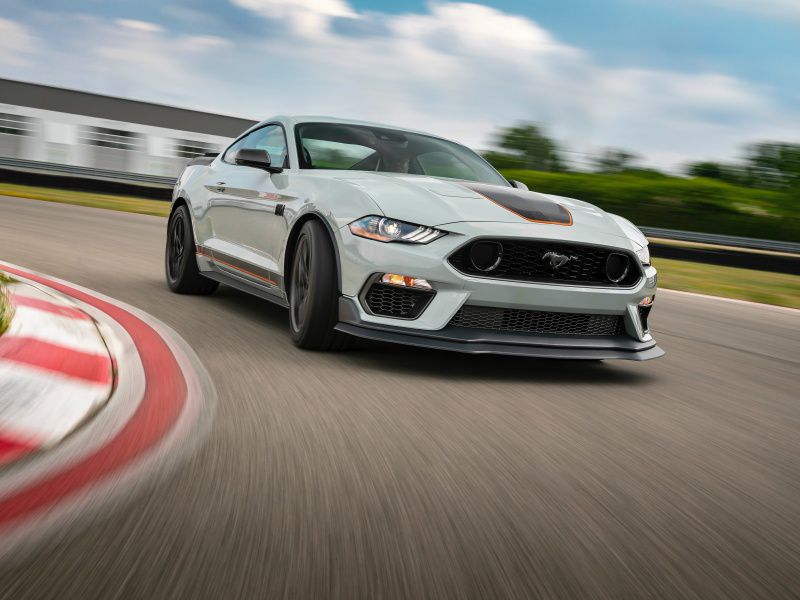
Photo by Ford
Safety & Driver Aids
For the 2021 model year, the Ford Mustang has a clear advantage over the Chevrolet Camaro in terms of electronic safety equipment and driver’s aids. With the Camaro, key electronic safety aids are optional rather than standard, and they include forward collision warning, blind-spot warning, rear cross-traffic alert, and rear parking sensor system. The Camaro does get a 5-star (top) rating from the National Highway Traffic Safety Administration. A lengthy list of active and passive safety equipment is available on the Mustang. Ford Co-Pilot Technology includes automatic high beams, blind-spot information system with cross-traffic alert, lane-keeping system, pre-collision assist with automatic emergency braking, rear-view camera system, auto on-off headlights, and rain-sensing windshield wipers. The optional Ford Safe & Smart Package includes adaptive cruise control, a voice-activated touchscreen navigation system, and SiriusXM Traffic and Travel Link.
: Ford Mustang
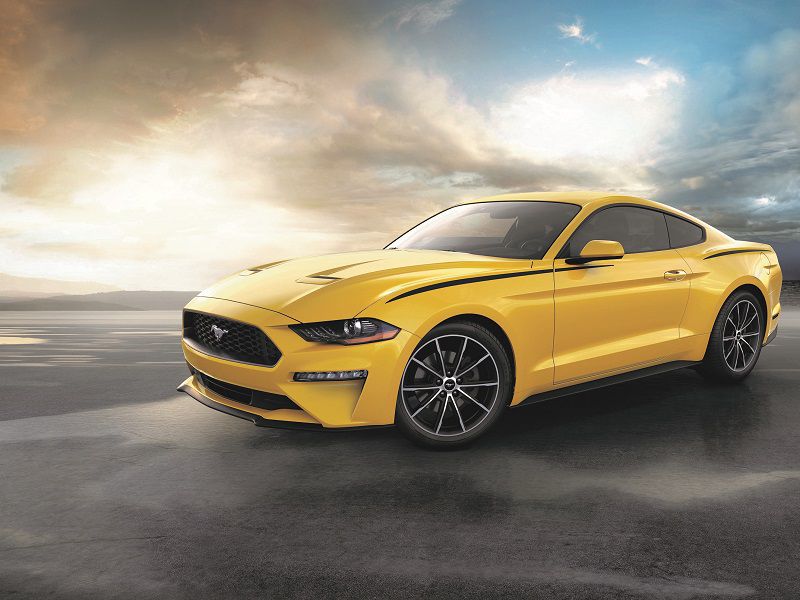
Interior and Trunk Space
While typical Mustang and Camaro buyers don’t expect their vehicles to enable them to do practical chores like picking up lumber at the home improvement store, they do use their vehicles as daily transport. So it is a bit surprising that their designers and engineers don’t try a little harder to make them easier to live with. The Camaro, in particular, is not all that well-suited to daily life unless you’re single and intend to stay that way. While the Camaro and Mustang both offer very pleasant accommodations for driver and front-seat passenger, the “occasional” rear seats are better purposed for holding grocery bags. The rear seats also make a good overflow cargo area, especially in the Camaro which has a tiny (9.1 cubic feet) trunk and a small trunk lid. In comparison, the Mustang’s 13.5 cubic feet of trunk space seems positively expansive. Trunk space in the Camaro convertible shrinks to just 7.3 cubic feet, while in the Mustang convertible it drops to 11.4 cubic feet.
: Ford Mustang
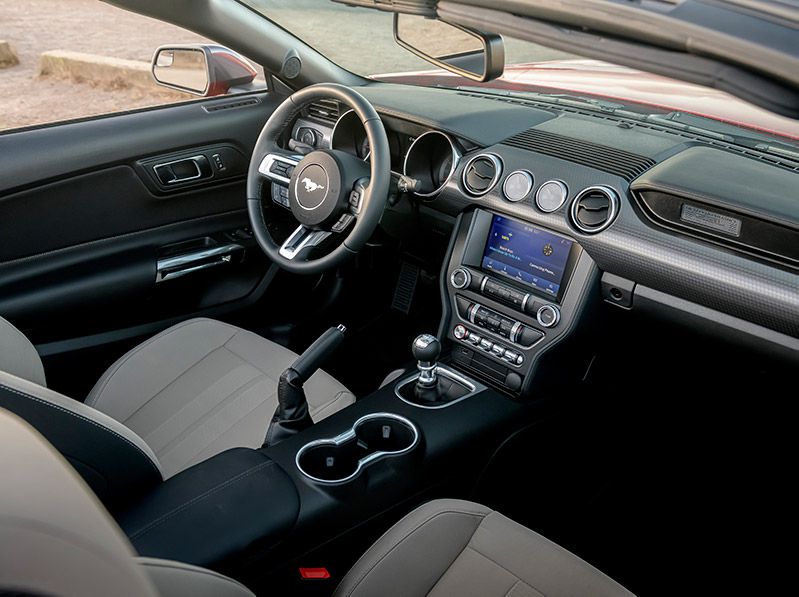
Photo by Ford
Trim Levels
Both the Chevrolet Camaro and the Ford Mustang offer a variety of trims and options that allow buyers to tailor their vehicles to their requirements. The Mustang lineup has six configurations – EcoBoost, EcoBoost Premium, GT, GT Premium, Mach 1, and Shelby GT500. All of them are rear-drive, a rarity among mass-market cars, and all of them offer strong standard equipment plus very intriguing option packages. The Camaro is available in eight different trim configurations – 1LS, 1LT, 2LT, 3LT, LT1, 1SS, 2SS, and ZL1. While that could be confusing at first glance, the LS is the lowest-quality model, and it, like the LTs, has the turbo 4-cylinder as the base engine. The V6 is an option for all the LT trims. The SS models feature the 6.2-liter naturally aspirated V8. And the ZL1 is the 650-horsepower supercharged car with sophisticated go-fast equipment to match.
: Ford Mustang
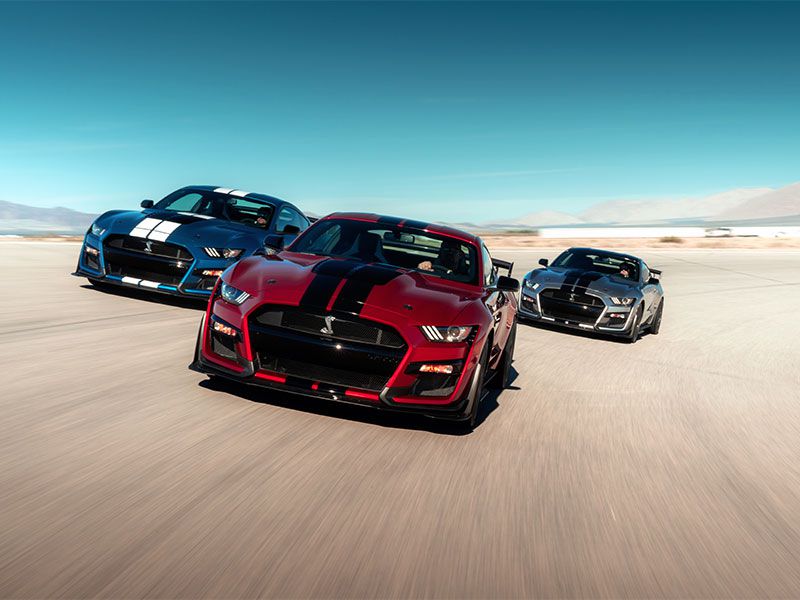
Photo by Ford
Pricing & Value
Both the 2021 Chevrolet Camaro and the 2021 Ford Mustang have relatively inexpensive models that offer great looks, good driving dynamics, and nice features for well less than $30,000. The convertibles start at about $31,000 to $32,000, which is a bargain. From there, the prices steepen, but we make the case that virtually all of the Camaro and Mustang models represent excellent vehicle values for their customers. The matchup between a Camaro 1SS coupe and the Mustang GT Fastback is an example of that. Both cars are powered by V8 engines that produce more than 450 horsepower, and their suggested base prices are $37,500 and $36,120, respectively. At the top end of the line, the Chevrolet Camaro ZL1 has a base MSRP of around $63,000 for the coupe and $69,000 for the convertible, which is excellent for the performance value. And that value is matched by the 2021 Ford Mustang Shelby GT500 that delivers 760 supercharged horsepower for about $73,000.
: Tie
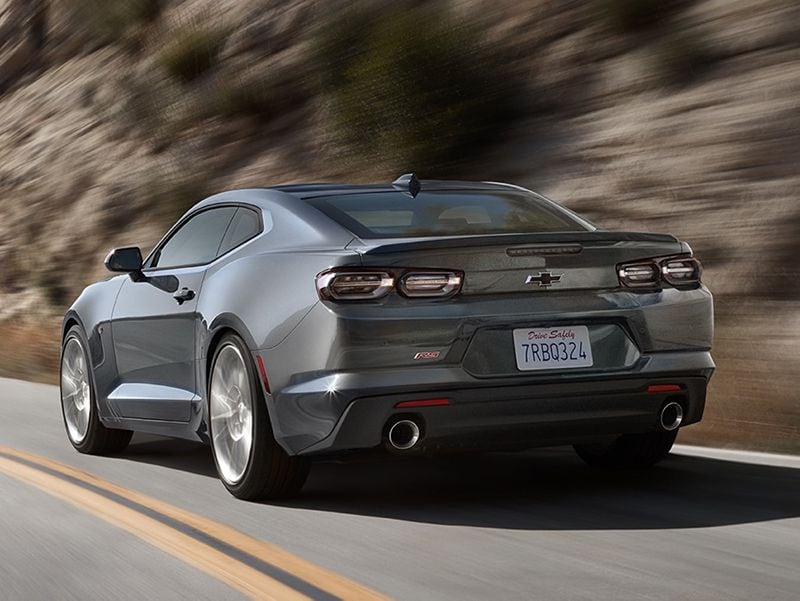
Photo by General Motors
And the Winner Is...
For decades, the rivalry between the Ford Mustang and Chevrolet Camaro has been hot and heavy. Looking at the non-V8-powered versions, Ford has an edge with its EcoBoost cars, but it doesn’t offer a V6. We think the sweet spot for both cars is with the naturally aspirated V8s, and that’s where the cars are essentially neck-and-neck. In the Mustang GT and the new-for-2021 Mach 1, the Mustang has a nice one-two punch there. At the same time, it is hard to say they are head-and-shoulders above the Camaro SS. For technical sophistication, you might argue the Camaro ZL1 outdoes the Shelby GT500, but it is difficult to argue with 760 horsepower. In choosing a winner here, we have to go with the broad choices one brand offers its buyers versus the other in the areas that really count. And so our winner is... the Ford Mustang.
: Ford Mustang
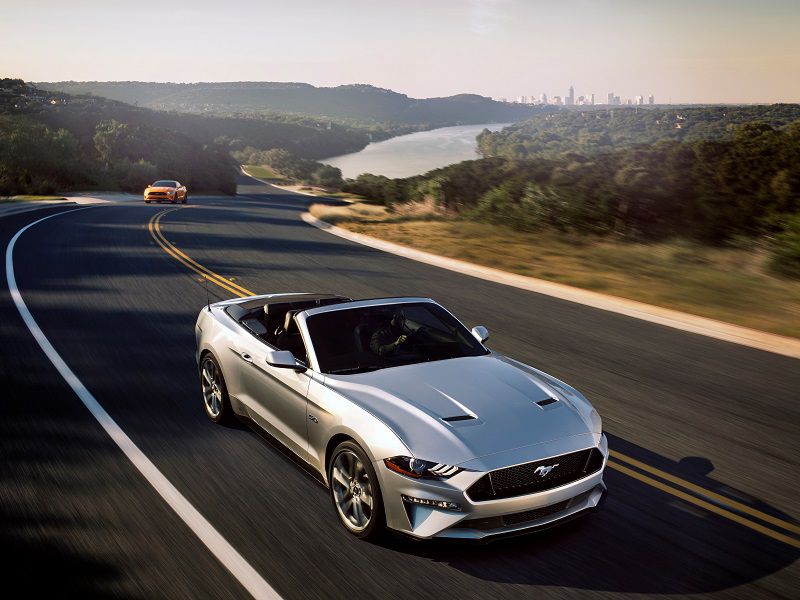
Photo by Ford